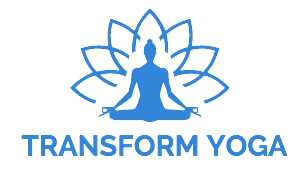
The Future of Yoga in the West: Beyond Fitness, Towards Wellness
The Future of Yoga in the West: Beyond Fitness, Toward Wellness
With the rise of Pilates and reformer Pilates across the West, many people are wondering what this means for yoga. Is it falling out of favour? I don’t think so, but I do believe the role of yoga is shifting. For a long time in the West, yoga has often been packaged as a form of fitness, but its roots go far deeper – into wellness, mindfulness, and stress reduction.
From Fitness Craze to Wellness Practice
In the last couple of decades, yoga classes in gyms and studios in the West were often about sweating it out. Power yoga and hot yoga became mainstream, attracting those who wanted strength and flexibility gains rather than stillness or meditation.
But this isn’t the full picture of yoga. Traditional yoga always encompassed far more than physical postures. Breath control (pranayama), meditation, and sound practices were integral parts of the system. The postures themselves were designed to prepare the body for stillness—not to be a workout in their own right.
Traditional Hatha yoga classes in India can be slow and repetitive in their postures, designed to cultivate mental stillness and discipline over time. Yet many Westerners, used to high-energy workouts, find this “boring.” On a recent Ayurvedic retreat in India, I noticed many guests came for stress and burnout treatments. They loved the massages and herbal therapies but often skipped the “prescribed” yoga sessions—unaware that these quiet, meditative practices were the part of the medicine they could take home and use to transform their daily lives.
For context, Ayurveda is India’s ancient system of medicine, using herbs, diet, massage, and lifestyle practices to balance the body and mind. Yoga sits within this tradition, offering the mental and spiritual practices that complete the healing process.
In my own classes, while I adapt routines to keep things fresh and engaging, I make sure body awareness, breath, and mindfulness stay central. That’s the essence of yoga for me—and I know many other teachers feel the same.
Pilates and Reformer Pilates: A Quick Look
Pilates, created by Joseph Pilates in the early 20th century, was originally called “Contrology.” It focused on strengthening the core, improving posture, and building functional movement patterns through precision and control.
Reformer Pilates takes this further with its signature spring-based equipment, offering resistance training that’s low impact but highly effective. It’s now a favourite for those seeking a mindful workout that strengthens and tones without the high impact of traditional gym sessions.
Across the US and UK, Pilates studios, especially reformer studios, are experiencing a boom, with boutique fitness spaces popping up in every major city.
Breathwork and Sound Healing: Yoga’s Hidden Gifts
While Pilates grows on the fitness side, other wellness practices are rising too—especially breathwork and sound healing.
Both of these have deep roots in yoga:
- Breathwork comes from yoga’s pranayama practices, used for centuries to calm the mind, balance energy, and improve focus.
- Sound healing, through chanting and mantras, has long been part of yoga and meditation traditions for its ability to shift mood and deepen relaxation.
Today, these practices are often taught as separate disciplines, but they come straight from yoga’s toolkit.
Is Yoga Falling Out of Favour?
I don’t think so. What we’re seeing is a rebalancing.
- People are turning to Pilates and strength training for physical fitness.
- They come to yoga for stress reduction, emotional wellbeing, and spiritual nourishment.
- Practices like breathwork and sound healing are booming, but they’re still part of yoga’s DNA.
I expect we’ll see traditional styles like Hatha Yoga, which focus on slower movements, breath, and meditation, gain popularity as people look elsewhere for their workouts but return to yoga for its wellness benefits.
My Take
Rather than competing with Pilates or HIIT classes, yoga is evolving. In the 2010s, yoga was often marketed as a fitness craze. In the 2020s, it’s coming home to its roots: inner calm, emotional balance, and spiritual wellbeing.
The wellness economy is growing, and yoga will remain a central part of it, especially as people realise it already includes breathwork, sound, mindfulness, and even elements of strength training.
Final Thought
So, is yoga falling out of favour? No. It’s just shifting roles. As Pilates and other fitness options grow, yoga is reclaiming its place as a practice for mind, body, and spirit. Expect to see traditional forms become more popular as the West rediscovers yoga’s original purpose: not just a stronger body, but a calmer, clearer, more connected self.
What do you think? I’d love to hear your thoughts? Share your experiences and opinions in the comments below!

